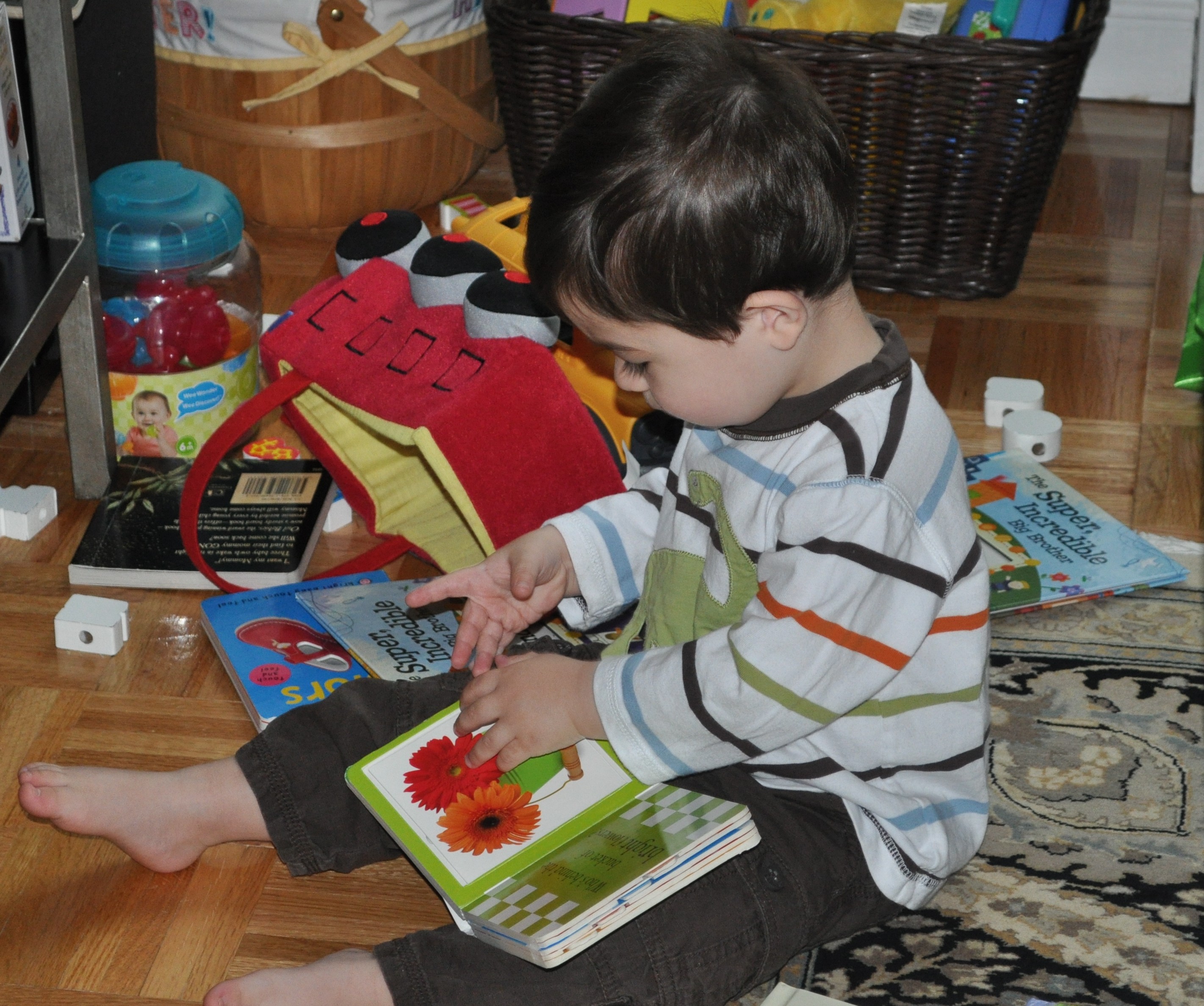I got a lot of positive feedback from my first Independent Play post, so I thought I would continue it, and share some thoughts on how to keep it in place for your older child. Obviously, there will come a point when your toddler will no longer want to play in a playpen. I would say somewhere in the 18-24 month range, your child is going to be ready to move to doing independent play in their room. Room time can be a wonderful thing – it allows for more play options for your child, a wider space, and hopefully, some time for you as a parent to get things done while your child is happily entertained. It forces them to not only find ways to play by themselves, but to also choose between various options. I find that Brandon behaves better and is more focused throughout the day when he has his time to play alone. What a nice treat for mommy and child!
Here are my keys for moving from the playpen to room time:
- Make it Safe – it goes without saying, but you must baby proof the entire room. We have locks on the closet doors, outlet covers, straps for the furniture, etc. Watch your child while they play in their room and notice if anything seems like it potentially could be dangerous. Always ere on the safe side.
- Limit the Fun – when you are just starting out, having all their toys accessible to them can be totally overwhelming for a child. It can also cause for a huge mess since they will probably pull out anything they can get their hands on. Limit what they can get out (at least to start), and keep the toys in rotation so that they stay interesting. I actually have a special basket that I keep in the closet that is full of toys that Brandon only gets to play with during this time. He has his regular toys as well, but these additional “special” toys add extra appeal.
- Give them Boundaries – after spending months in the rather confined space of a playpen, a whole room can be very intimidating. My husband thought of a great way to help with this, and actually brought out the mat insert that sits in the playpen and put it in the center of the room. Brandon spent the whole first week on that mat before he eventually ventured off (further proof that kids actually respond well to some boundaries!). We still put out a special quilt that my mom made during his room time, and he usually sits on it most of the time. Moms of rambunctious boys – you will be totally shocked how your little crazy man will sit still when he is finally given the option!
- Be Accessible, but Hidden – a baby gate in the door frame is the perfect way to keep your child in their room, without closing the door. Try to stay out of your child’s line of sight, as I’ve found that once they see mommy or daddy they get distracted and will often want to come out to play. Just like when they were younger, a monitor (especially a video one – just because it’s fun to see what your child does when he thinks no one is looking!), is really helpful here.
- Give it Time – once you move to room time, you really can, and arguably should, stretch the amount of time your child spends playing alone. I have personally seen the benefits a child reaps when they are forced to figure things out for themselves, and you need to provide them with enough time to do so. I would try and do at least 30 minutes. We do 30 minutes with Brandon (who is now 26 months) twice a day when he doesn’t have school (once when he does). You could also do one hour once a day. Fit it into your schedule and try and make it a consistent time each day so that your child knows what to expect. A great tip is to get a timer and set it for the amount of time, that way your child knows when it goes off that time is up, not when they just decide to whine for you to come and get them.
- Expect Good/Bad Days – there are inevitably going to be days when your child does not want to play by themselves, even after you’ve worked them into it at the beginning (yes, there might be some tears and whining when you start out – stay strong and keep the time frame short, they will grow to love it!). I’ve come to find with my own children that they get a little more clingy when they are either teething or about to get sick. On these days, I don’t force the issue and I just skip independent play. But children are smart, and if they realize that putting on a pout will get them their way, then they will continue to do so even after that little cold is gone. At that point, it might take tough love for a day, but we get back into our routine and they are good as gold before you know it. On the flip side, there are many days when Brandon doesn’t even want to leave his room after his time is done. He will figure out a new toy (one that he would have whined to me about helping him had I been there) and want to keep playing. This is what it’s all about.
- Clean Up – another great skill for your child to learn is the art of cleaning up the messes we make. At the end of each room time, help your child to put away their toys and leave their room tidy. Sing the song and slap high-fives when they’re done, most kids (surprisingly) seem to think this part is almost a game.
I am (rather obviously) a huge advocate for independent play. It’s good for the kids while they are doing it and allows me the time I need to accomplish things, so that I can focus solely on the kids once they are done. Please let me know if you have any comments on what has worked for you and your family, and whether your kids like to play by themselves – I always love to hear new ideas!



















Great post. There is no question that kids will love it and proper planning can allow for a smooth transition from playpen to room time.